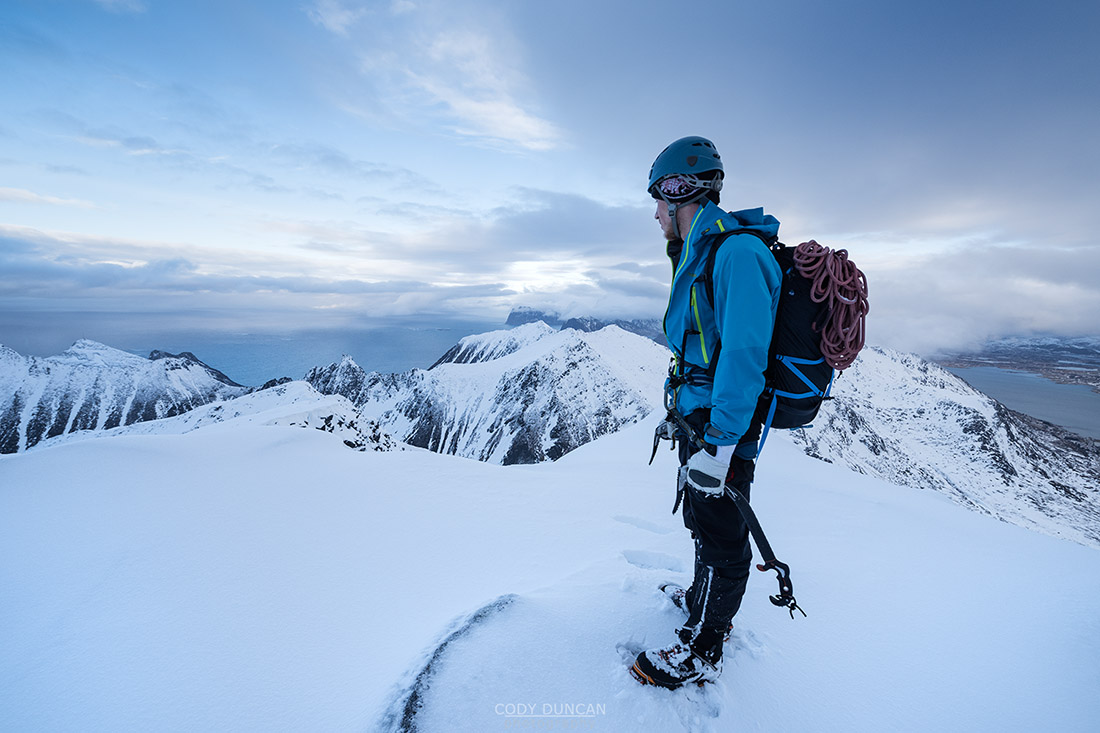3 Tips to Prepare you for Winter Hiking/ Snowshoeing This Year
Written by Christina Perry – Physiotherapist, Clinical Pilates Instructor

Hiker on winter summit of Hustind mountain peak, Flakstadøy, Lofoten Islands, Norway
For all you winter enthusiasts! The time is fast approaching when you can finally take out your “winter wanderland” gear. Snowy, crisp days mean that there are new adventures and new activities to experience – especially living on this beautiful West Coast. Winter hiking and snowshoeing are great ways to get outdoors and fully take in all that is B.C. But before you throw on your hiking shoes, here are 3 quick tips to keep your body happy and healthy (and, hopefully, injury free)!
1. Gear Up: Make sure you have the appropriate gear and clothing for the hike. It’s important at this time of year to make sure you have good tread on your shoes and, for more snowy and icy conditions, that you have snowshoes or crampons. Using hiking poles can also be a life-saver – they help distribute your weight more evenly and can decrease load through your joints (not to mention they can help you balance on
those steep descents!). And do not forget to pack plenty of water; winter hiking can be physically more challenging, and dehydration can be accelerated in colder weather so it is crucial you have enough water to last the duration of your hike.
2. Prepare your body: It is important before you exert yourself, that you complete a full body warm up. This can include a short brisk walk followed by dynamic stretches. It is important to include your upper body in the warm up, especially if you are using hiking poles or carrying a backpack, in order to prepare your body for the workout ahead. And we cannot forget the importance of a good cool down! Spending 5-10 minutes cooling down may also be helpful in decreasing muscle soreness and can be instrumental in quicker recovery times.
3. Check conditions and know your route: In snowy conditions, it can be harder to spot trail markers and follow the trail. It can be helpful to have a map, or a smart device with GPS – this way you can track your path if you feel that you’ve become “turned around”. It is also important that you are prepared to turn around and go home if the trail conditions are poor. This could include (but is not limited to) trails that are flooded out, slippery snow or icy conditions, fallen trees obstructing the path, and access roads that cannot be driven upon due to weather. Make sure you tell a family member or friend where you are heading and the route you plan to hike before you leave on your adventure. The Parks B.C. website (http://www.env.gov.bc.ca/bcparks/explore/) will often have trail condition updates, and you can also look at the North Shore Search and Rescue website for alpine weather conditions and survival tips (https://www.northshorerescue.com/services/).
So if you find yourself on the trails this winter, keep these helpful tips in mind to ensure safe and fun exploring! See you in the mountains, Vancouver!


